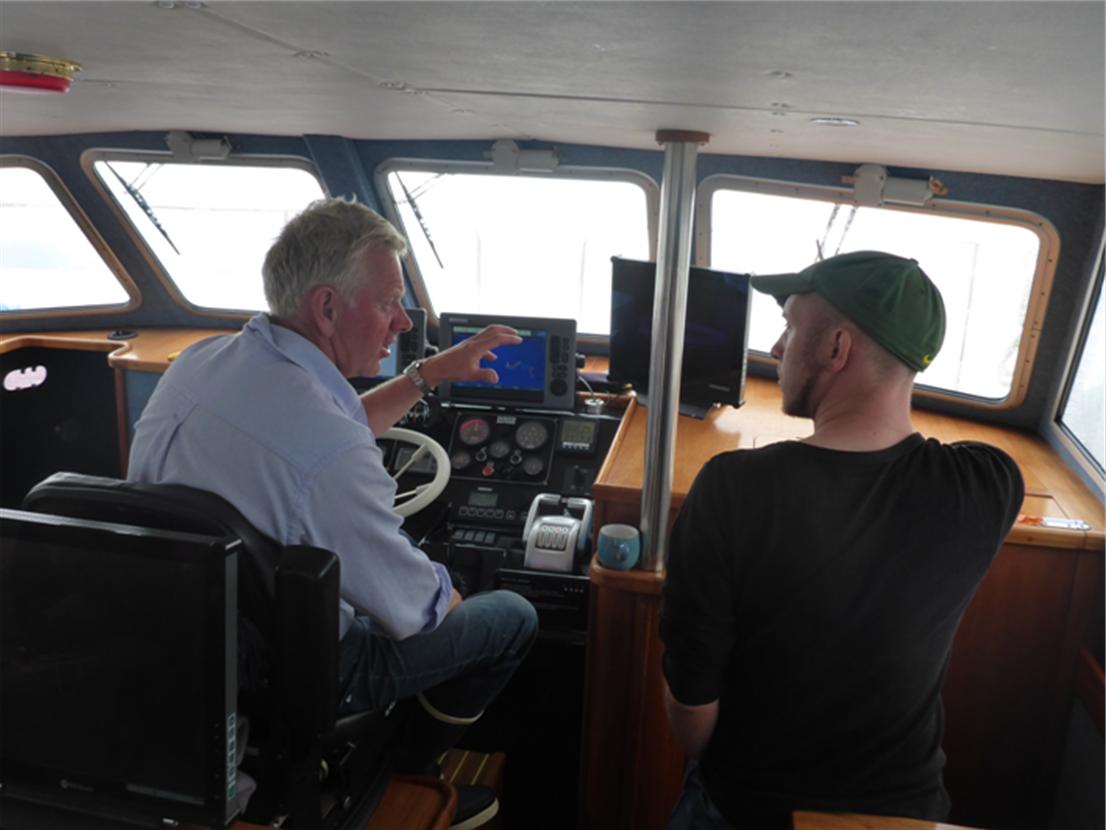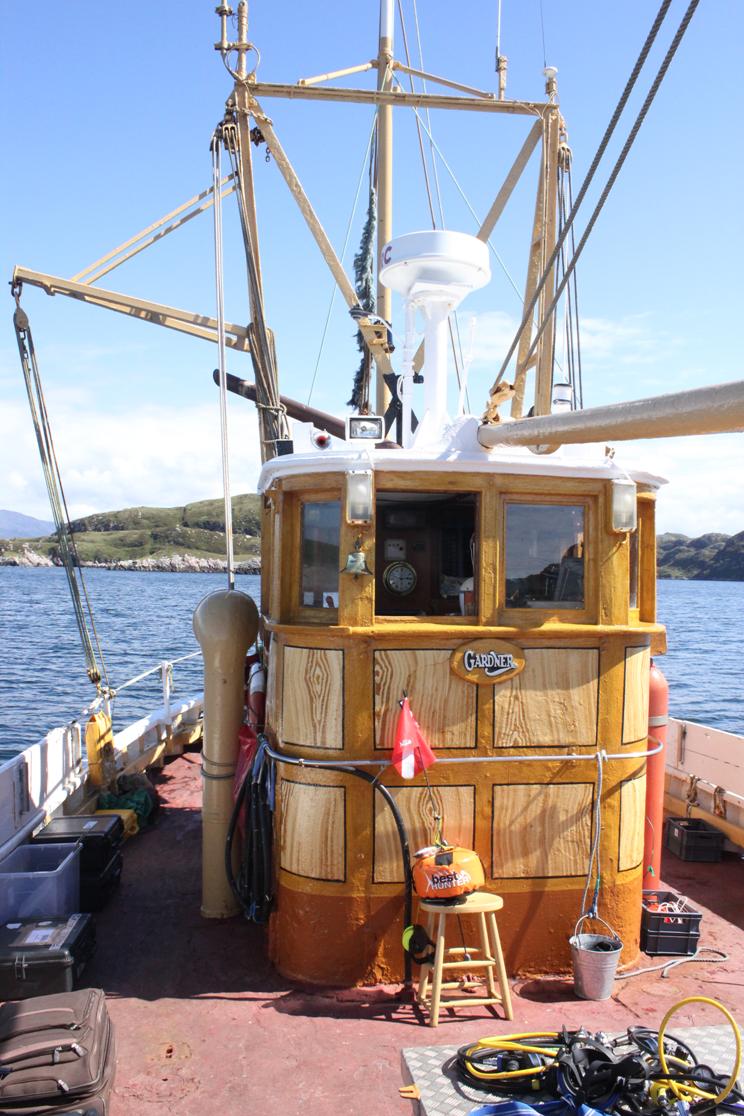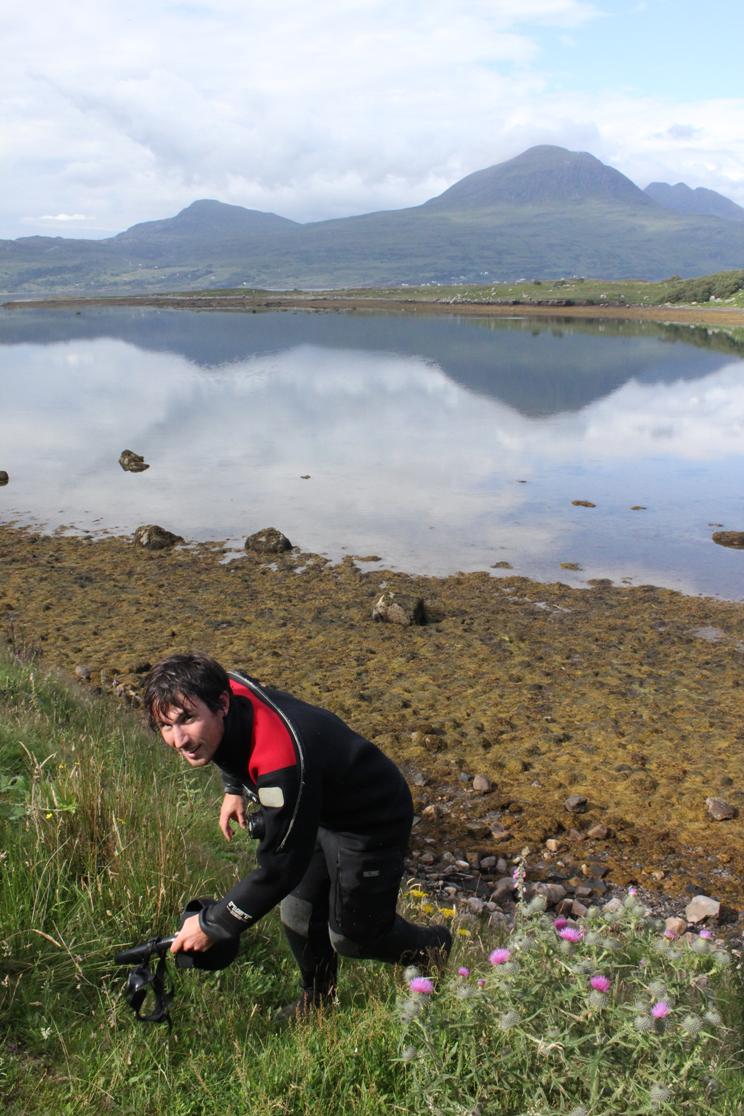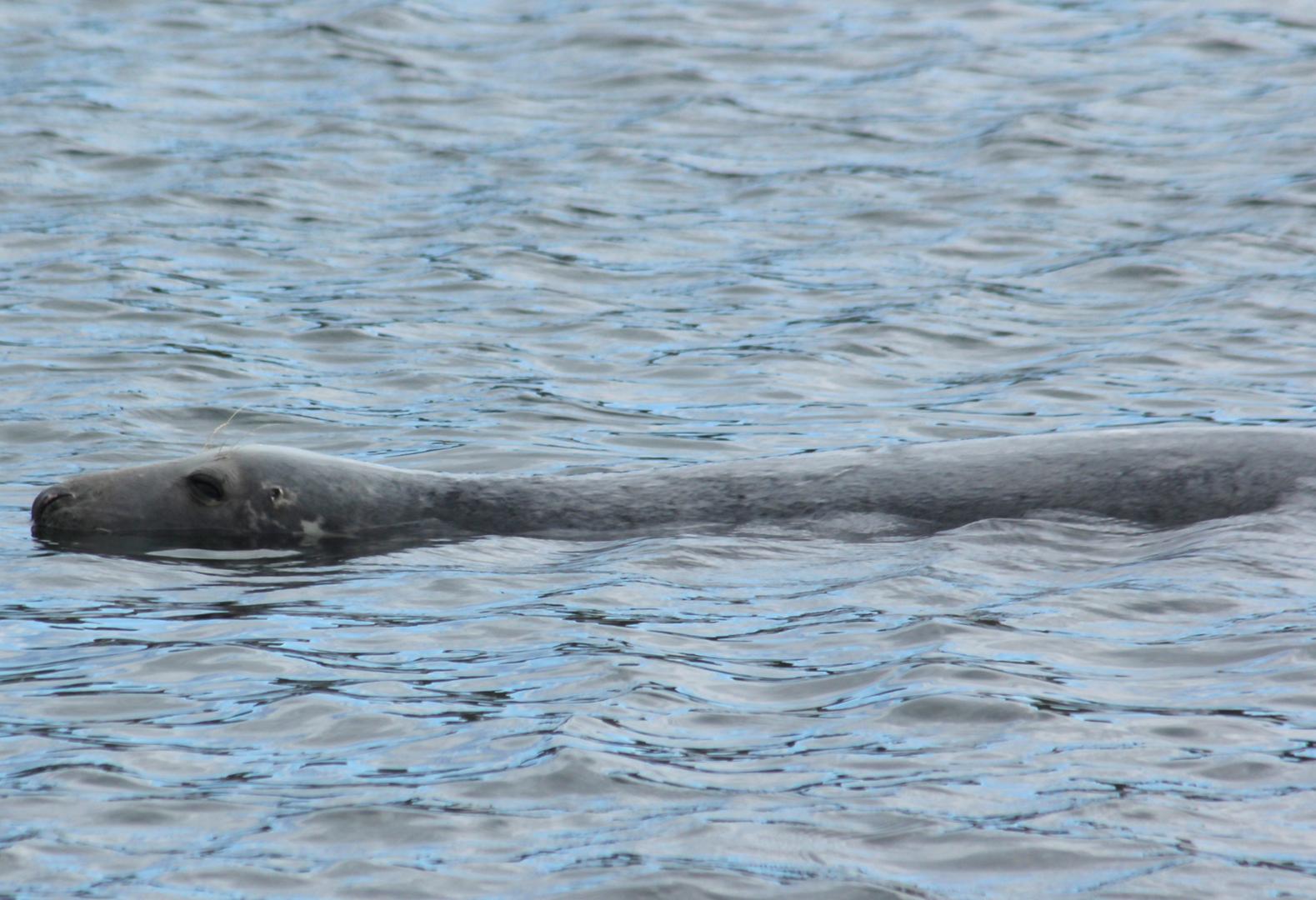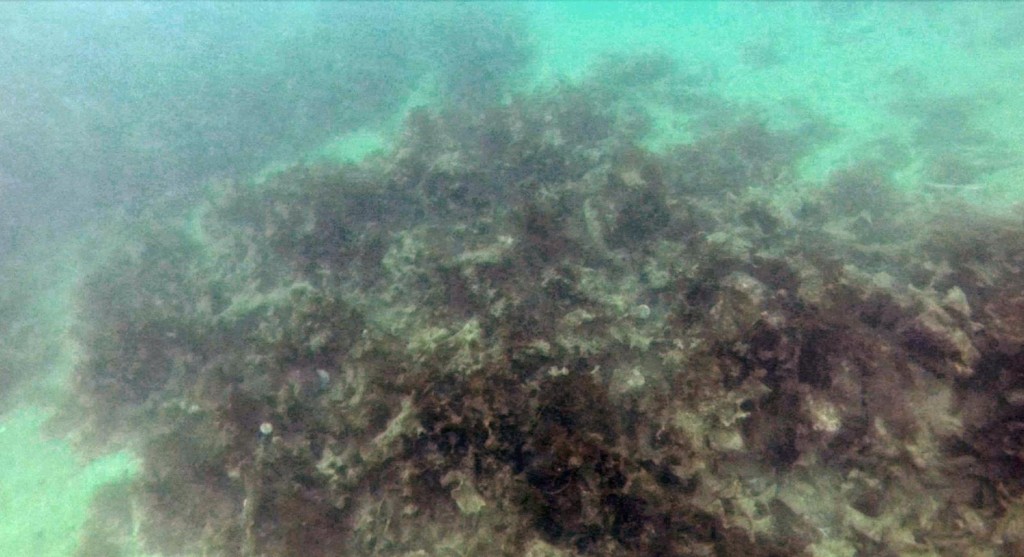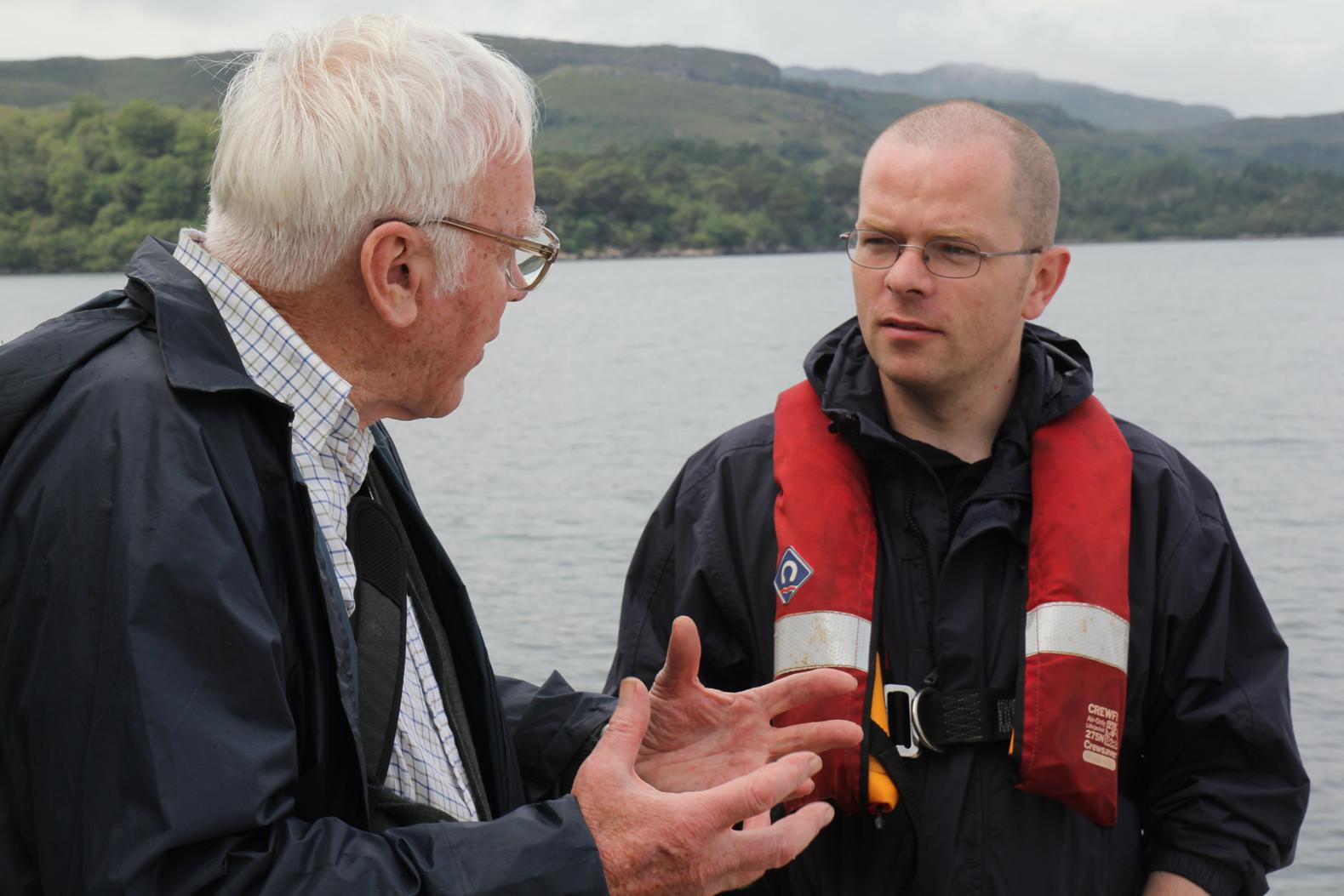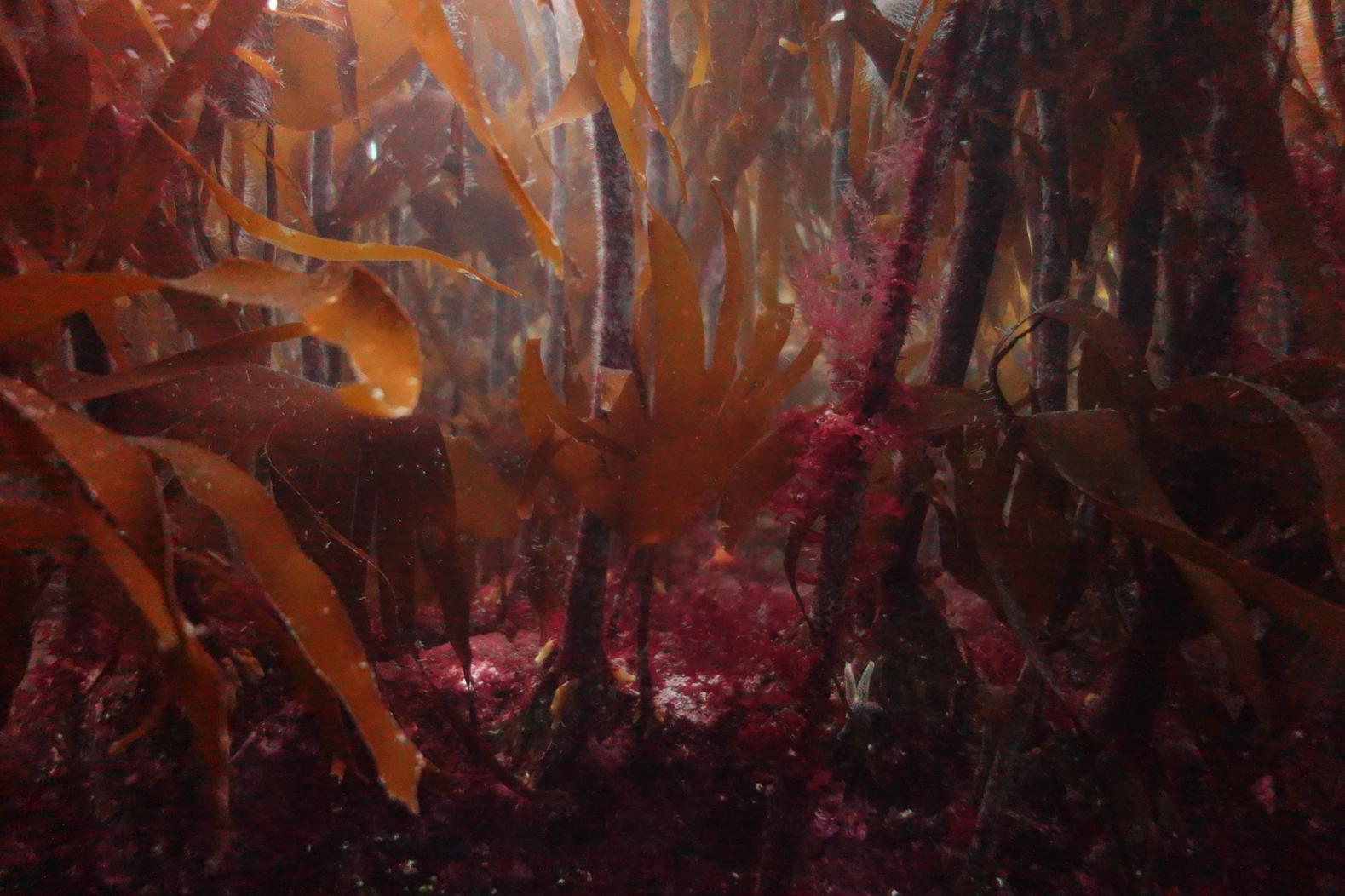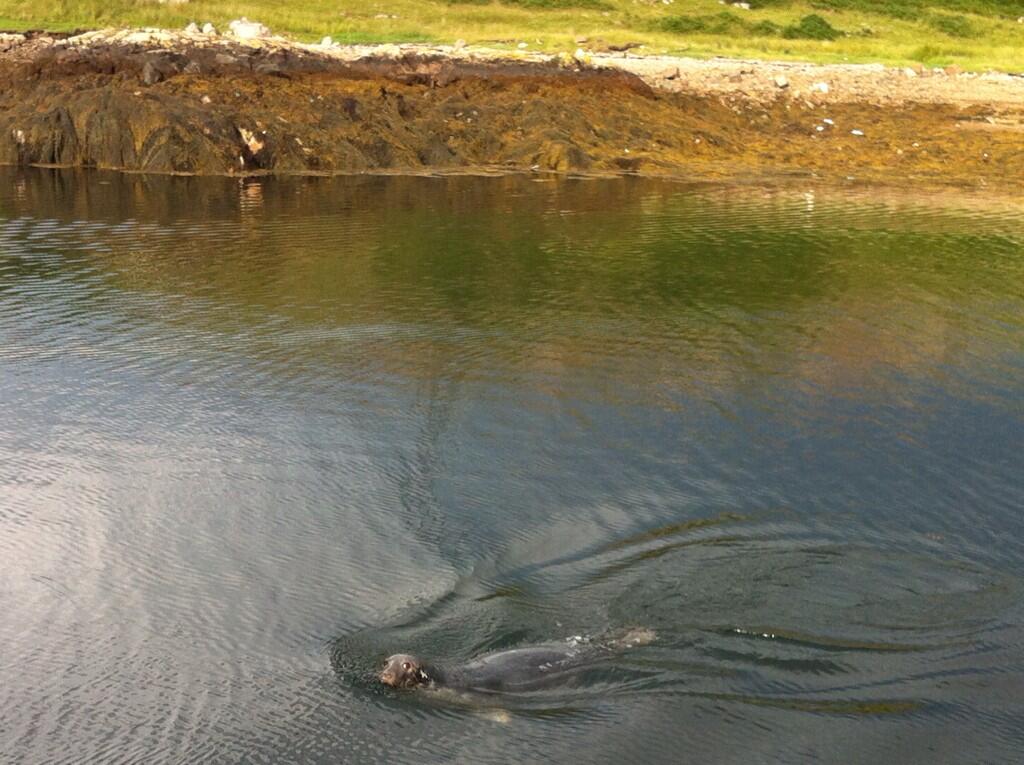We have found that the best way to engage with the local maritime community and to gather information on local heritage sites is simply to spend as much time talking to people as possible. Working with local skippers allows us to do this and has been very rewarding in terms of local knowledge. We used two boats on the SAMPHIRE dive surveys this year, the MV Nimrod, based at Kinlochbervie and the MV Seaflower, based at Sheildaig.
The MV Nimrod is a historic converted trawler built in 1957. The Nimrod is skippered by Jimmy MacIntosh of Cape Wrath Charters. Jimmy is a well-known local who worked in fishing and cargo for many years and even had a stint as the harbourmaster at Kinlochbervie before moving to dive and angling charter work. Jimmy is no stranger to archaeology and worked with Time Team and our own Phil Harding when they came to Kinlochbervie in 2002 to survey the Spanish galleon near the village. We also met Jimmy during our community outreach fieldwork in May. Jimmy’s long experience of Kinlochbervie means that he knows every corner of the sea in the area and he has passed us information on a number of previously unrecorded wrecks in the area and we were delighted to be able to book him and the Nimrod for our dive surveys.
The Seaflower is a much more modern vessel. It is a 40ft high performance catamaran, launched in 2010 and operated by father and daughter team Kenny and Gemma Livingstone of Torridon Sea Tours. The Livingstone’s have deep roots in the area and Kenny’s father fished from Ardheslaig and recovered the cannon now on the main street. We used the Seaflower for our dive survey at Murchadh Breac. One of the most exciting features of the boat is its’ built in ROV, allowing us to see the seafloor down to 40m depth!
Kenny Livingstone explaining some of the local wreck history to Andrew Roberts, diver on the SAMPHIRE team.